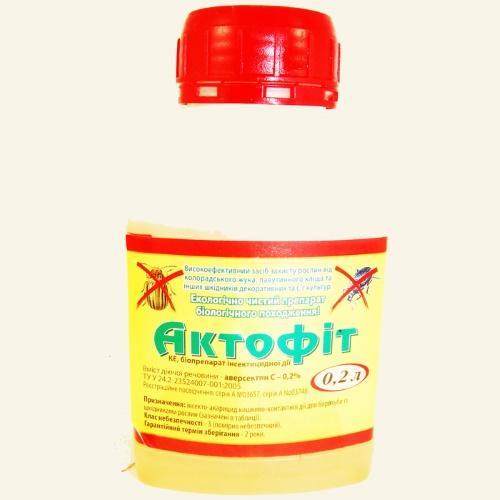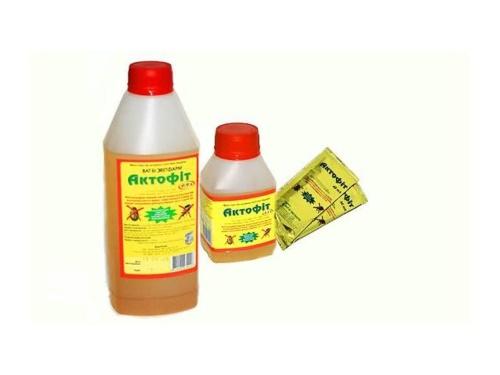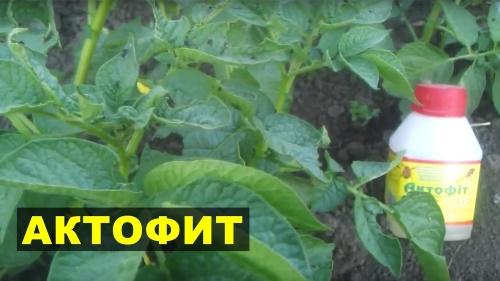How to use Aktofit - biological insecticide against many pests
 Insecticides in horticulture and horticulture are as indispensable as fertilizers. One of the most effective drugs is Aktofit. Knowing how to use Aktofit on a particular crop, you can get rid of pests in a short time without harming the plants. It is a universal remedy for pest control of vegetable gardens, gardens and even indoor crops. Fast action, lack of addiction and compatibility with many other drugs are its main advantages. What is Aktofit and what pests is it used against?
Insecticides in horticulture and horticulture are as indispensable as fertilizers. One of the most effective drugs is Aktofit. Knowing how to use Aktofit on a particular crop, you can get rid of pests in a short time without harming the plants. It is a universal remedy for pest control of vegetable gardens, gardens and even indoor crops. Fast action, lack of addiction and compatibility with many other drugs are its main advantages. What is Aktofit and what pests is it used against?
Description of the drug

The drug is not addictive. It can be combined with fungicides, fertilizers, growth stimulants. The exception is funds with an alkaline reaction. If a dark precipitate forms during mixing, then the combination is impossible.
Another advantage of the insecticide is its convenient form of release. For small private households, you can purchase 10 ml glass vials or 40 ml bags of the drug. They contain an emulsion, yellow or brown, almost odorless. For an industrial scale, large packages are produced: bottles (200 or 900 ml each) and cans (4.5 liters.)
What pests is effective against Aktofit
 A natural insecticide will help get rid of these insects:
A natural insecticide will help get rid of these insects:
- Colorado beetle;
- ticks;
- aphid;
- thrips;
- scoop;
- white woman;
- sawfly;
- moth;
- weevil;
- leaflet.
How to use Aktofit and in what dosages
 The optimal time for processing plants is a warm sunny afternoon (from 28 ° C). The emulsion should be diluted first in a small amount of water, and then add the liquid to the desired concentration. Plants should be sprayed with this solution when pests appear. You cannot store it.
The optimal time for processing plants is a warm sunny afternoon (from 28 ° C). The emulsion should be diluted first in a small amount of water, and then add the liquid to the desired concentration. Plants should be sprayed with this solution when pests appear. You cannot store it.
Solution rates depend on the specific culture:
- for grapes, 2 ml is enough for each liter of water;
- for potatoes and strawberries, you need to take twice as much (4 ml);
- cabbage requires the same concentration as potatoes, with the exception of aphid treatment (in this case - 8 ml);
- cucumbers, tomatoes and eggplants may need 4 to 10 ml;
- for the treatment of indoor plants, you need from 4 to 10 ml.